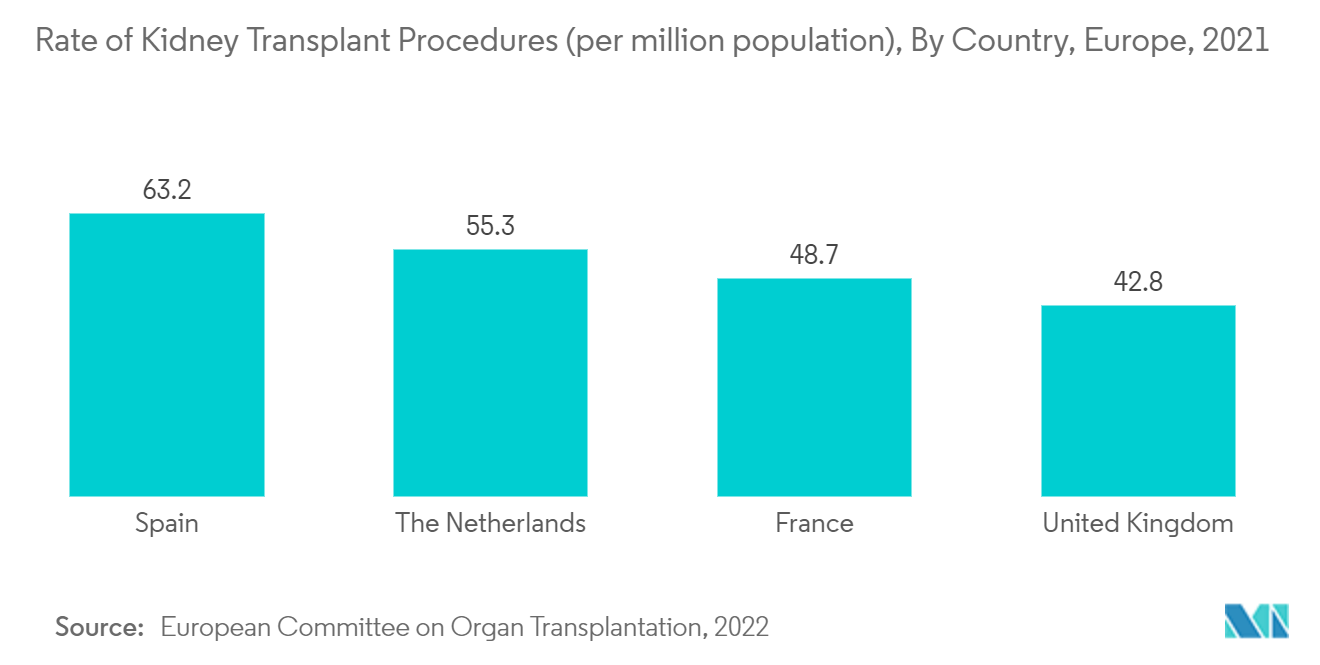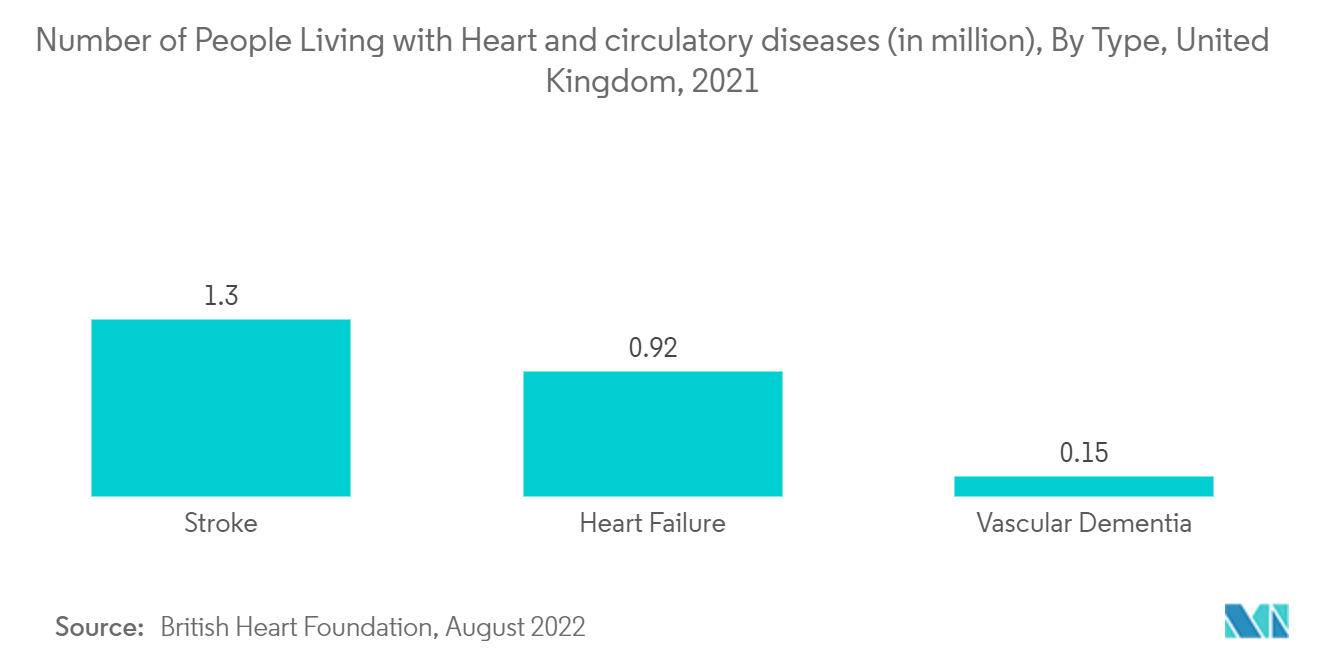Market Trends of Europe Artificial Organs and Bionic Implants Industry
Artificial Kidney Segment is Expected to Have Significant Growth During the Forecast Period
An artificial kidney is a wearable dialysis machine. An individual with end-stage renal disease may use a wearable artificial kidney on a daily or even a continuous basis. The increasing incidence and prevalence of renal failures in Europe are expected to drive segment growth.
Kidney disease has become a burden that is leading to kidney failure and causing a major healthcare concern in the European region in recent years. According to the European Parliament press release published in February 2022, nearly 100 million people suffered from chronic kidney disease (CKD), and it was among the most expensive diseases, with an annual cost estimated at USD 140,000 million (EUR 140 billion) in Europe. The incidence of kidney failure (or chronic kidney disease) is expected to increase by 2040 in the region. Thus, the burden of CKD is expected to create demand for the adoption of artificial kidneys for patient survival, thereby fueling the growth of the segment during the forecast period.
Furthermore, organ donation and transplantation remain the foremost and cost-effective clinical solutions for end-stage organ failure. However, the lack of donors leading to the organ shortage and difficulty in obtaining consent has recently been seen in the European region. As per an article published in Transplantation Reviews Journal in April 2021, clinical trials on wearable artificial kidneys were ongoing, and funding activities were also rising to develop implantable artificial kidneys globally, including in Europe. Hence, driving the artificial kidney segment growth.

United Kingdom is Anticipated to Contribute Significantly to the Market Growth
Among the other countries, the United Kingdom is anticipated to witness growth during the analysis period. Factors such as increasing disability and accidental injuries requiring amputations such as limbs, fingers full hands, among others, are major contributors to the artificial organs and bionic implants market growth in the United Kingdom.
Aging, diabetes, and vascular disease are all predicted to cause an increase in the number of amputations. Major amputation is among the most destructive complications associated with diabetes, and the number of major lower limb amputations in diabetes continues to rise in the country. As per the datasheet published in June 2022, a total of 7,957 major diabetic lower limb amputations were reported in a period of four years, and the cost of health care for ulceration and amputation in diabetes is approximately USD 1,230 million (GBP 1 billion) per year in the United Kingdom. Thus, the burden of lower limb amputations is expected to accelerate the artificial organs and bionic implants market in the country.
Furthermore, the demand for artificial organs is increasing in the United Kingdom due to a rising waiting list for organ transplantation coupled with a smaller number of live organ donors. According to NHS, a total of 6,759 people were waiting for a transplant in the United Kingdom, but only 2,951 people have received transplantation since April 2022. In addition, as per the Organ Donation and Transplantation Annual Report 2021 published by NHS, organ donation activity fell severely during the period from 1st April 2020 to 31st March 2022, as compared to the same period the previous year. As per the source, from 1st April 2019 to 31st March 2020, a total of 994 living kidney donors were there, which fell to 363 donors in 2020-21 in the country. Thus, due to the shortage of organs for transplantation, the demand for artificial organs is increasing in the country, further fueling the overall market in the country.


